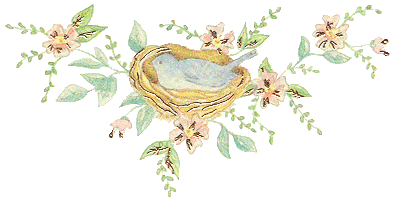

Have an old garden hose that leaks? Poke more holes in it, plug one end then attatch it to the faucet. Instant lawn or garden sprinkler.
Need a water bubbler for your garden? Put one old sock inside another old sock. Put a brick in the toe or fill with rocks. Wire the sock to the end of the hose.
Weeds between bricks or cracks in cement? Pour boiling hot water on them. But add a little bit of dish soap, or vinegar, or if it won't get on the plants you want to keep, some salt.
Have left over fertilizer, garden, or flower food at the end of the season? Mix it all together and apply it with a hand help spreader.
Creating new flower beds that are straight? Lay a board on the ground where you want the border to be. Using a sharp knife, saw through the sod along the edge of the board. Want the edges of the flower bed curved? Lay out your garden hose in the shape you want for the bed. Cut along the hose.
Have some old wooden pallets you don't know what to do with? Place one on the ground, drive two support poles on each side, slide other pallets over the poles. Makes a great compost bin.
Re-doing your landscape? Take pictures and label with the plant names, where you got them from, when you planted them, and care tips. Keep in a folder of scrapbook.
Spraying your plants? Make sure to get under the leaves as well as on top of them.
Need to tie up your tomatoes or other plants? Use the legs cut from panty hose. The static electricity is good for your plants.
Need a watering can? Use a gallon milk jug by poking 5 or 6 tiny holes in the bottom. Then water away. Or place the jug at the base of a tree, in a flower bed, or next to the tomato plants. Fill the jug with water, add fertilizer if needed. Things water themselves.
Want to add flavor to your grilled food? Use the branches of fruit or nut trees, cut into short lengths and use small twigs for kindling.
Want your annuals to flower more? Picking the flowers often will encourage more blooms.
Want to keep aphids off your roses? Plant 1 or 2 garlic cloves around your roses.
The foliage from bulbs look unsightly? Don't cut it off. The plants that grow from bulbs need the foliage to provide the bulb with food for next year's flowers. Just fold it in half and hold it in place with a rubberband, string, or twist tie. Plant perennials or annuals around the beds to hide the foliage of the bulbs.
Need to mulch? Place 3 or 4 alternating layers of single sheets of newspaper and cover with 3 inches of grass clippins, leaves, or other organic matter.
Unwanted birds in you garden? Hang tin can lids nearby the garden or in fruit trees.
Seedlings need protection? Cut the bottom out of a gallon milk jug and place it over your tender plants. You can also use the large soda bottles.
Cutworms getting to your plants? Wrap strips of newspaper around the seedling plant. You can also use those insert cards from magazines. Put toothpicks or short pieces of soda straws all around the plants (it's more work, but effective).
Where did you plant your carrots? Mix radish seeds in with the carrot seeds. The radishes will sprout faster than the carrots and be ready to pick before the carrots get big enough to need the space.
What do you do with your eggshells? They are a great source of calcium for plants. Dry the shells in the oven or microwave. After they are dried, crush them as fine as possible and add to the planter mix or soil. Good for house plants too.
Need to water your hanging baskets? Put a few ice cubes in the baskets or freeze small cups of water to which you have added plant food. As they melt, the plants get watered & fed.
Add a cup of fireplace ashes to 2 quarts of potting soil when potting house plants.
Use peanuts, (the foam packing kind) in the bottom of flower pots. Smash or cut some of them into small pieces & mix into the potting soil. Helps hold moisture longer.
Hair clippings placed on the corn blade next to the stem will deter deer and other critters out of the corn. Sprinkling blood meal around the garden works, too.
Mow lawns in the evening and alter directions each time you mow. Keep the blades of your mower sharp. Never mow when the grass is wet. Put the clippings in the compost pile or sprinkle around in the flower beds for mulch.
Clean the under side of your lawn mower and the blade after each use. Spraying with a non-stick pan spray makes cleaning easier. Tomato cages can be used for peppers, eggplants, and other garden veggies.
Rolled up or mounded chicken wire can be used to raise vine crops off the ground.
Dehydrating your garden produce takes less space for storage. Foods that can be dehydrated are asparagus, beans, beets, broccoli, brussel sprouts, cabbage, carrots, cauliflower, celery, corn, cucumber, eggplant, greens, mushrooms, okra, onions, parsley, peas, peppers, potaotes, pumpkin, squash, tomatoes, zucchini.
Freezing is another good way to store them. Foods that freeze well are artichokes, asparagus, beans, beets, broccoli, brussel sprouts, cabbabe, carrots, cauliflower, corn, endive, greens, herbs, kale, okra, onions, parsnips, peas, peppers, potaotes, pumpkins, rutabagas, squast, tomatoes, turnips.
No matter how you store your produce, do it while it is still fresh, and wash it well. Pick your crop as soon as it is ripe and can, freeze or dry the same day.
